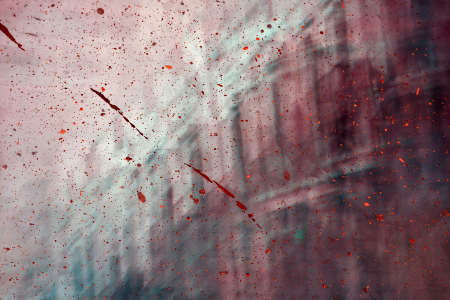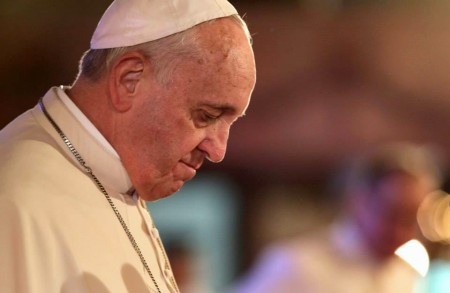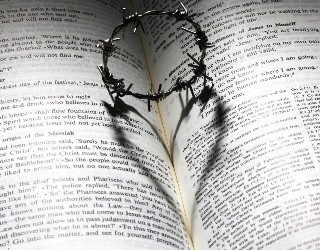 Hi readers, it seems you use Catholic Online a lot; that's great! It's a little awkward to ask, but we need your help. If you have already donated, we sincerely thank you. We're not salespeople, but we depend on donations averaging $14.76 and fewer than 1% of readers give. If you donate just $5.00, the price of your coffee, Catholic Online School could keep thriving. Thank you. Help Now >
Hi readers, it seems you use Catholic Online a lot; that's great! It's a little awkward to ask, but we need your help. If you have already donated, we sincerely thank you. We're not salespeople, but we depend on donations averaging $14.76 and fewer than 1% of readers give. If you donate just $5.00, the price of your coffee, Catholic Online School could keep thriving. Thank you. Help Now >
Deal W. Hudson on How the Artist Addresses the Absolute?
FREE Catholic Classes
The recent debate over the virtues and vices of Darren Aronofsky's film, Noah, raises more important, and fundamental, questions: How does the artist address the Absolute? What is required of an artist, whether in film, painting, or a novel to meet the specific challenges of portraying the need and longing of our human nature for the Creator?
Highlights
Catholic Online (https://www.catholic.org)
4/12/2014 (1 decade ago)
Published in Movies
Keywords: culture, art, film, movies, beauty, absolute, Deal W. Hudson
WASHINGTON,DC (Catholic Online) - The recent debate over the virtues and vices of Darren Aronofsky's film, Noah, raises more important, and fundamental, questions: How does the artist address the Absolute? What is required of an artist, whether in film, painting, or a novel to meet the specific challenges of portraying the need and longing of our human nature for the Creator?
In Aronofsky's film, for example, there are several scenes in which Noah, played by Russell Crowe, looks into the sky and asks why God is "silent." Most film lovers will instantly recall when the silence of God was addressed in films such as Ingmar Bergman's Winter Light (1962) and Robert Bresson's The Diary of a Country Priest (1955). In these films, the effect on the viewer is overwhelming, the sense of the character's isolation, his suffering, and despair are felt as genuine.
In Noah, these scenes fall flat, and lead me to conclude that Aronofsky did not know how to achieve an effect befitting the question he dared to ask. Aronofsky seems to think all that is necessary is for Russell Crowe to bellow the question into the dark sky and let the camera linger on the clouds until the viewer feels the profundity of the moment. It just doesn't happen. Aronofsky fails to prepare the viewer to venture onto that "darkling plain," to use Matthew Arnold's words.
Noah's previous encounters with God through his dreams and his drug-induced vision are much more convincing. Up to that point, the film has not descended into the silliness of its angelic Transformers or the deus ex machina of the fire wall saving the ark from capture by the tribes of Cain. Introducing an Ingmar Bergman moment after feeding his adolescent viewers their necessary repast of CGIs (computer graphic images) is, well, like expecting the finale of Beethoven's 9th Symphony to miraculously arise out of a Herman's Hermits medley.
This is not to say that an artist cannot mix popular and classical mediums in a work about serious moral or religious concerns - Stanley Kubrick's Clockwork Orange (1971) is an example of a masterful mixing of high and low elements. Of course, much of that work was already done by Anthony Burgess in his novel ten years earlier.
It's too bad that Aronofsky didn't take the source of his film's central allusions more seriously; not only Bergman's film trilogy about the silence of God but also his use of John Ford's The Searchers (1956). In that film, John Wayne's Ethan Edwards sets out on a prolonged search for his niece, Debbie, played by a young Natalie Wood. He's accompanied by his nephew Martin Pawley (Jeffrey Hunter) who realizes only at the last minute that Ethan plans to kill Debbie who was kidnapped by Chief Scar as a young child. Ethan views Debbie as having become an "injun" by nurture and, thus, is better off dead than to live on as a savage. Like Aronofsky's Noah, Ford's Ethan Edwards wrestles with the inner compulsion to put a family member to death.
We ask you, humbly: don't scroll away.
Hi readers, it seems you use Catholic Online a lot; that's great! It's a little awkward to ask, but we need your help. If you have already donated, we sincerely thank you. We're not salespeople, but we depend on donations averaging $14.76 and fewer than 1% of readers give. If you donate just $5.00, the price of your coffee, Catholic Online School could keep thriving. Thank you.Help Now >
This parallel leads Aronofsky to use the most iconic moment in The Searchers: Ethan Edwards is framed by camera in the door of the Jorgensen cabin with the desert behind him after saving Debbie and not taking her life. John Ford achieves a moment of cinematic grandeur, the warrior whose love has overcome his hatred, but only after his heroic strength and courage had been fully displayed and his mission accomplished. When Russell Crowe is seen in his Searcher's pose, the camera looking through the dark interior of the arc, catching him at the front door with the crashing sea behind, we see his isolation, the gravity of his task, but without any heroic grandeur. Noah just comes off as a tough guy with an iron will who is going to get his "job" done come hell or high water, literally!
The inherent challenge of an artist addressing the Absolute is convincing his audience of three things: first, that he is sincere; second, that he has a genuine insight; and third, the skill to communicate it through his work. In the best book that has ever been written on the artist and the sacred, Art and Scholasticism (1921), Jacques Maritain (1882-1973), the French Thomistic philosopher, used the phrase "religious art" to categorize those works who fail the test. What Maritain had in mind was the kind of Catholic kitsch that has been addressed in previous columns - simplistic, overly pious, one-dimensional art, possessing an unmistakable lesson or doctrinal statement.
Such overt preaching ruins art, argued Maritain, and Aronofsky for all his professed religious skepticism, did not avoid preaching his lessons of a cruel God, unjustly punished angels, and a human race whose "dominion" over creation had been turned into the consumption of creation.
© Deal W. Hudson, Ph.D
-----
Deal W. Hudson is president of the Morley Institute of Church and Culture, Senior Editor and Movie Critic at Catholic Online, and former publisher and editor of Crisis Magazine.This column and subsequent contributions are an excerpt from a forthcoming book. Dr. Hudson's new radio show, Church and Culture, is heard on the Ave Maria Radio Network.
---
'Help Give every Student and Teacher FREE resources for a world-class Moral Catholic Education'
Copyright 2021 - Distributed by Catholic Online









 Daily Readings for Friday, April 19, 2024
Daily Readings for Friday, April 19, 2024 St. Alphege: Saint of the Day for Friday, April 19, 2024
St. Alphege: Saint of the Day for Friday, April 19, 2024 Stewardship Prayer: Prayer of the Day for Friday, April 19, 2024
Stewardship Prayer: Prayer of the Day for Friday, April 19, 2024


